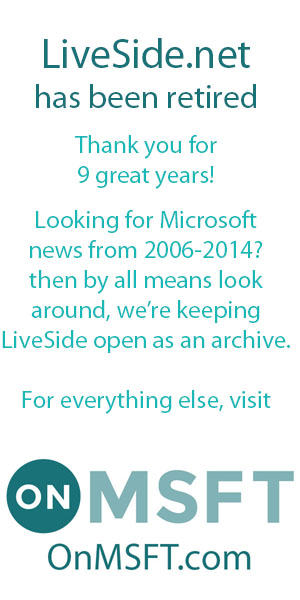 Microsoft seems to be reshaping itself before our very eyes, most recently with what looks to be a carefully crafted new “Windows Everywhere” ad campaign, and now today the announcement of “Windows Store only at Best Buy”, a new store-within-a-store concept coming to more than 600 Best Buys (along with Future Shops) in the US and Canada. However, elsewhere within the company, that positive message hasn’t been as clearly portrayed.
Microsoft seems to be reshaping itself before our very eyes, most recently with what looks to be a carefully crafted new “Windows Everywhere” ad campaign, and now today the announcement of “Windows Store only at Best Buy”, a new store-within-a-store concept coming to more than 600 Best Buys (along with Future Shops) in the US and Canada. However, elsewhere within the company, that positive message hasn’t been as clearly portrayed.
The latest ad for Windows Everywhere, which debuted yesterday, is, as Geekwire’s Todd Bishop notes, not only brings together a number of Microsoft properties including IE, Bing, Windows 8 and Windows Phone 8, Skype, and Xbox, but also may help to explain the thinking behind Microsoft’s rumored re-organization:
[youtube_video]RS6r8QgLfLk[/youtube_video]
This new mantra, of Windows as part of a set of Microsoft services instead of the Sinofsky-led old school thinking of “all roads lead to Windows”, may be part of why Microsoft and Steven Sinofsky parted ways in the first place. Indeed, Microsoft looks to be ready to tout all of its devices and services, Windows or not, somewhat equally in its Microsoft Stores and now in Best Buy, too, even as it continues to push the “Windows” name. From the Microsoft News Center press release on “Windows Store only at Best Buy”:
Ranging in size from 1,500 square feet to 2,200 square feet, the Windows Store will be the premier destination for consumers to see, try, compare and purchase a range of products and accessories, including Windows-based tablets and PCs, Windows Phones, Microsoft Office, Xbox, and more. Each store will feature an innovation space highlighting a variety of Windows scenarios across devices; a showcase section with the latest Windows-based PC form factors such as ultrabooks, convertibles, detachables and all-in-ones — including portable devices; and a standalone area featuring Microsoft Surface.
“The Windows Store offers a large-scale, hands-on customer experience that will show customers how Windows and Microsoft devices and services can make it easier for them to work and play,” said Tami Reller, chief marketing officer and chief financial officer of the Windows Division at Microsoft. “We’re pleased to partner with Best Buy in bringing the latest technologies to consumers at scale in a unique environment where they can explore how Microsoft products fit together across entertainment, travel, music and other scenarios.”
In some other areas, however, Microsoft’s message isn’t as clear, or as positive. At this week’s E3, many are saying that Microsoft botched the message they’re trying to get out with the Xbox One. From allowing speculation to run rampant for months about buzzwords like “always on” and “used games” before only partially addressing them at E3, to giving Sony plenty of time (and ammunition) to make headway with gamers. Sony announced, to loud and sustained applause, that *their* games could be sold, traded, or given away (even though that only applies to Sony games, and it isn’t clear what 3rd party game makers will require), and Microsoft has allowed the “always on” conversation to drift from “you never have to wait while your Xbox updates” to “you can’t play games unless you’re connected”. Sony also came in at $100 cheaper than the Xbox One (although as BGR notes, if Microsoft hadn’t bundled in the Kinect, pricing would be much closer).
Both Thurrott and BGR fault Microsoft’s botched message with the Xbox One launch, but not necessarily the new console itself, for its perceived poor first impressions. While “Windows Everywhere” and new Microsoft stores are good attempts to portray this new Microsoft, there’s still lots of work left to do.

